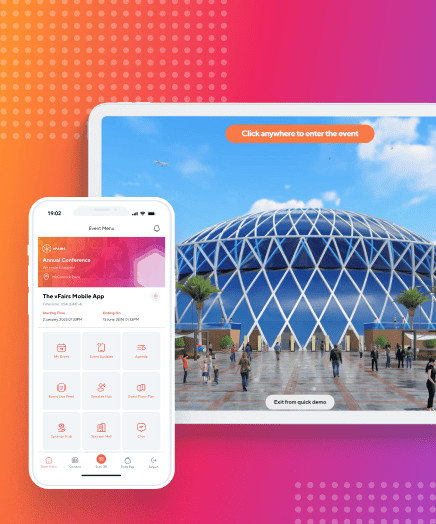A Virtual Open Day is a chance for prospective students to learn what their life will be like at your university. It’s a window into the credentials of your stellar faculty, your top-notch campus facilities and your immersive student societies. According to a research by the University of Derby, 28% of the students participating in the study wished that they had done more research on their universities before picking them. By using the convenient and cost-effective platform offered by a virtual open day, you encourage students to build a stronger connection with your institution by providing them with thorough information that aids them in making informed decisions before they apply. How do you go about this though? Here are some pro tips to getting it done right.
1. Chalk out a theme
Do you want a broad event turn out? Do you want a niche demographic to log in? Are you looking for a huge content share/download volume? Do you want to publicize your webinars? Are you looking for many chat room interactions or do you simply want people to start applying for the upcoming semester through  the event?
the event?
Your virtual open day can have one or several purposes but defining that theme is crucial. Once you know what your virtual open day is set to achieve, the results become far more measurable and you can also clearly define multiple ‘ways in’ and use them to their full potential.
For example, if the purpose of your event is to get the maximum number of people to participate in the event live chat, you will know beforehand that you need to leverage Social Media reach via paid event campaigns and various plugins, local press and your corporate website to drive traffic to those forums. The dedicated theme will also form the backbone of your event content strategy making it far more focused and relevant, which brings us to the next point.
2. Polish your content
Hold onto the theme
Once you’ve finalized the virtual open day theme, use it to drive the content that you present during the event. If you plan to spread awareness regarding your newest Psychology programs, prepare videos that showcase the program’s depth and breadth along with documents containing its course outlines. Pair these with a killer webinar delivered by your Psychology Program Head and you will see your efforts reach fruition a lot faster than they would, had you gone for a more generic content display.
Keep it fresh
The truth is that developing good content takes time and effort. To avoid this, many institutes reuse decades-old material in their open days hoping to catch the interest of a fresh student base. The problem with this is that the half-assed effort is so glaringly obvious that it not only fails to have an impact, it also leaves a very distasteful impression over those potential students who manage to open a document or video.
Think about developing content formats that would add value to those absorbing them. Would that video make any difference to the visitor seeing it? Will this poll and its results have any impact on the visitors participating in it? Will this webinar solve any real student concerns? Make sure that everything you set live during the virtual open day sufficiently answers these questions.
Provide a range of perspectives
A virtual open day works best if it provides a well-rounded university experience where visitors get a 360-degree view of the campus and its culture. To ensure this, have different touch points peppered throughout the virtual open day that allows visitors to interact with different university stakeholders. Have the faculty deliver webinars and the university admin head Q&A sessions and power chats. At the same time, have a booth or auditorium dedicated entirely to enable visitor interactions with existing students and university alumni. Here, the former can give prospective students a candid take on the campus life and the latter can share some insight on the employed life post-graduation.
3. Be responsive
With a virtual open day, you will be selling convenience as the leading benefit to your audience. Where huge crowds near booths in physical open days deter most students from engaging in conversations with booth reps, your virtual open day allows them to instantly reach your reps through chat instantly. However,  easing their access to the booths is only half the job. To keep them engaged, your reps need to be swift in responding to their queries.
easing their access to the booths is only half the job. To keep them engaged, your reps need to be swift in responding to their queries.
When the event is live, make sure that you have people manning each virtual booth and help desk. Instruct them to try their best to resolve all visitor queries within the chat room that the query has been raised, instead of directing people to the “correct room”. This will help in building a prospect nurturing environment at your virtual open day that will boost conversions and deliver on its promise of keeping everything real-time.
4. Be realistic
It’s sensible to put your best foot forward but it’s quite deceptive to overpromise. For an event that is exclusively designed to attract prospective students to apply to the university, it is very easy to boast about facilities you don’t currently have and programs that are half-developed. Through your virtual open day, along with showing the best that your university offers, be sure to include snippets of the not so perfect aspects of the campus that these prospective students are sure to come in contact with.
Highlight things AS THEY ARE. Point out what facilities the dorms do and do not have, or are in the plans. You can also include a few things that students have complained about in the recent past and the university has plans to address in the future. It’s best if your prospective students find this out from you rather than on their own because the latter will breed distrust and bad word-of-mouth. Also, seeing a few minor cons next to an array of pros is a natural way of making your event and university come across as authentic.
5. Choose your date and time wisely
You picked a weekend, great. It was Superbowl weekend, bummer. Many events fall prey to this mistake because, in their pursuit of hosting the event on dates when people would not be too busy with school or work, they end up clashing with other huge festival or sports events that they have no chance of competing  with. Keep your event on a weekend that doesn’t clash with a holiday or an important national/global event to maximize participation.
with. Keep your event on a weekend that doesn’t clash with a holiday or an important national/global event to maximize participation.
As for time, keep your target demographic in mind. Hosting your most important webinar at 8 am on a Saturday is a bad idea because your target student base will be fast asleep at that hour after an exhausting week of studying. Aim to find an ideal balance of when your most qualified people can be available to manage the event when it’s live and when your target audience is most likely to tune in. But in any case, your focus should always be the event audience because if they’re not around to experience all your team’s effort, there’s really no point.
6. Keep it short
As best practice, virtual open days perform best when they’re spread over 2 days going live for anywhere between 3-5 hours each day. Since visitors login, get what they want and leave, attendance drops considerably after the mentioned duration. To make the most of this insight, try to schedule your most important online sessions and surveys early in the event so that they receive maximum turnout.
What’s great about virtual open days is that they can be left open to visitors when it is not live or when the event has been wrapped up. Those who could not make it to the live event can still benefit from your content and display which enables the event to continue delivering impact long after it has been completed. Owing to this ability, your virtual open day needs to be live for a shorter, more optimum time which saves time and resources. Also, since your employees are also likely to be busy with their jobs, it’s best if you don’t keep them engaged with the live event longer than is required.
7. Metrics are important, but they’re not everything
The virtual environment makes it very easy for you to track registrant information through the event landing page which eases pre-event reminders and post- event follow-ups. Many virtual event platforms also provide rich reports on event turnout, performance, engagement, and conversions. These insights are undoubtedly imperative to determining your event ROI and improving future events but it’s important to remember that with virtual open days, quality of interest matters a lot more than numbers.
event follow-ups. Many virtual event platforms also provide rich reports on event turnout, performance, engagement, and conversions. These insights are undoubtedly imperative to determining your event ROI and improving future events but it’s important to remember that with virtual open days, quality of interest matters a lot more than numbers.
You may have gotten thousands of registrations but you’ll notice that not all registrants will actually attend the event and even fewer will engage with the reps and absorb content. Similarly, you may get hundreds of views on a webinar but you might observe a smaller turnout on chat interactions with university academics which is a more certain qualifier for interest. Ultimately, your evaluation of these diverse metrics should base on the theme and objective that you had set out in the start because only then will you get the takeaways that matter.
Bottom Line
A Virtual Open Day is not only an awareness tool but also a lead generator. Registrations are like the initial prospects that are still mulling over the university. However, you can have call to actions to capture students who would like to apply for the university or capture email addresses to send them detailed application procedures. This way you can see how many of your visitors wish to move forward with an application. This allows you to reach out to them after the event and keep reminding them about application deadlines and other milestones.
Virtual Open Days are easy on the pocket and a lot more permissive than conventional fairs owing to their global reach, unlimited attendance capacity, and logistical reliefs. They do, however, need a solid plan to exhibit their true unbridled potential. Use these guidelines to devise and execute a killer virtual open day that injects rejuvenation into your university’s marketing efforts whilst being a success with the attendees.


